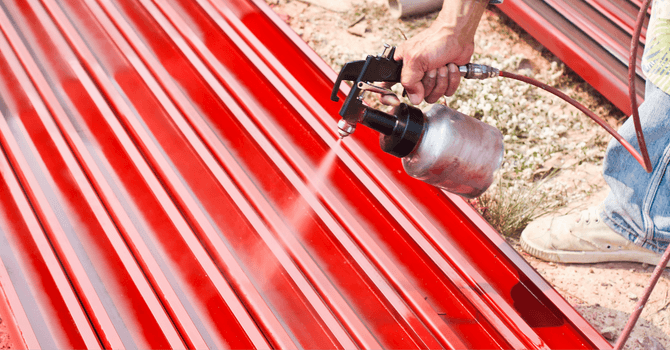
Are you looking to cover your indoor or outdoor flooring with strong, durable paint? Urethane or polyurethane paint is exactly what you need.
For your wood decking, concrete walkway, cement garage floor, or steel-framed pergola, this paint will get the job done, regardless of the weather.
Here’s everything you need to know about this type of paint.
The Definition of Urethane Paint
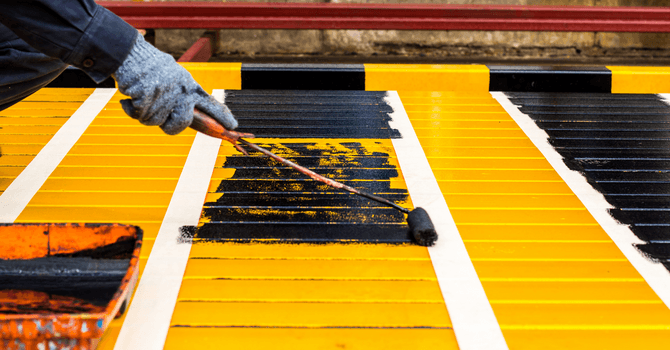
Source: Canva
Urethane paint gets its name from the urethane links found in binders by means of an oxygen-carbon-nitrogen-hydrogen chain.
It’s created by the chemical reaction between a monomer molecule (urethane paint) or a polymer (polyurethane paint) bearing an isocyanate and an element with one or more additional hydrogen molecules.
When you’re perusing urethane paint technical data sheets, manufacturers will specify whether the paint is an acrylic polyurethane converted into an aliphatic isocyanate. Wait, what does that even mean?
What’s an isocyanate?
An isocyanate’s an ion, meaning a group of atoms. This chemical substance is made up of “isocyanate functional groups,” which are ions grouped together around what chemists call “organic radicals,” which can be:
Aromatic compounds;
Aliphatic compounds (fats);
Alicyclic compounds (non-aromatic fats).
Here's a distinction based on the number of isocyanate functional groups:
Monoisocyanates (single functional group);
Diisocyanates (2 functional groups);
Oligomers, homopolymers, polyisocyanates, etc. (more than 2 isocyanate functional groups).
With urethane paint, the most used formula is that of an aliphatic compound mixture made of hexamethylene diisocyanate (HDI) oligomers grouped together in two types of molecular structures:
Biuret;
Isocyanurate.
Why’s that important to know? Because it’s exactly those isocyanates that are the leading cause of occupational asthma in Quebec. As such, you have to follow instructions when using this type of paint.
What Can Urethane Paint Be Used For?
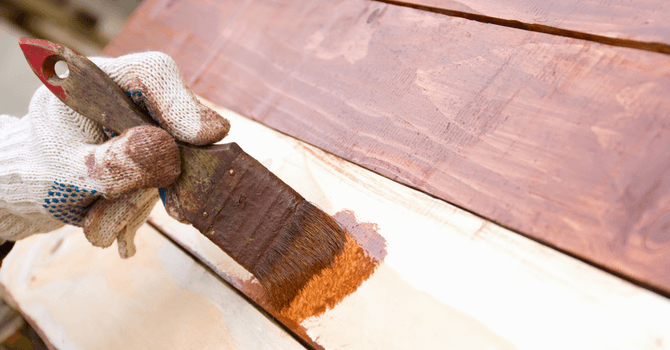
Source: Canva
Urethane paint has very interesting characteristics. It can be applied to:
Indoor and outdoor surfaces (pylons, tanks, etc.);
Plywood;
Solid wood;
Steel;
Galvanized steel;
Concrete;
Painted or stained floors (alkyd or latex).
It also has exceptional properties, such as a drying time that can be limited to 2 hours between handling, as a result of a urethane accelerator.
If the structure on which the paint is applied is meant for people, you can apply an anti-slip coating to the urethane paint if there isn’t one already.
As we’ll delve into further when discussing the paint types, there are urethane paints that have anti-slip characteristics.
You can even apply urethane paint to a rusty, steel surface. The only things you should consider are:
Surface preparation;
Making sure it isn’t damaged.
What are the pros and cons of urethane paint?
Pros:
Waterproof;
Self-sealing;
Impervious to concrete alkalinity;
Withstands cracks and chips;
Doesn’t require a primer;
Adapts to material motions (e.g. wood, metal);
Withstands UV rays and bad weather;
Available in numerous colours;
Doesn’t fade;
Practically odourless.
Cons:
Longer drying time (depending on the model);
Difficult to clean up, requiring thinners or solvents;
Containing volatile organic compounds (VOCs), urethane paint is considered less environmentally-friendly compared to the alternatives.
How to Use and Apply Polyurethane Paint
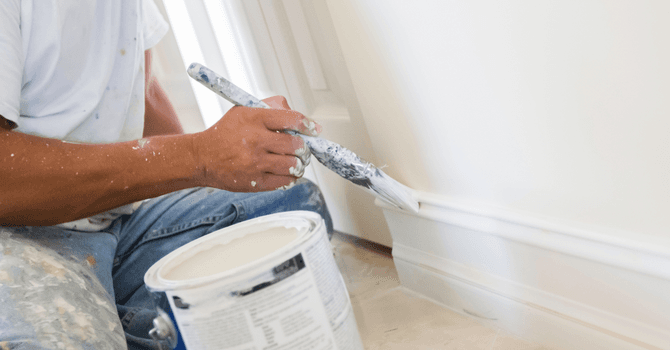
Source: Canva
Some manufacturers mention it in their technical data sheet, others don’t, but note that freshly applied paints are fragile.
Following the application, avoid walking on the painted surface for a few days. Doing so could damage the paint’s protective coating.
Make sure the humidity level in the room in question isn’t too high (for indoor use), and that it’s well aired out if the painted surface happens to be wood.
Most importantly, wait 30 days before cleaning the surface, otherwise, you risk wiping off the paint. Why is that? Because urethane paint takes 30 days to cure.
Applying a thicker coat of paint won’t render the paint-coated surface more protected. It’s quite the opposite. A too-thick coat of paint will weaken the paint’s protective coating.
Refer to the paint's technical data sheet to know the exact paint film thickness needed. If not specified, 3 to 5 mils (75 to 125 µm) will do.
Urethane Paint Models
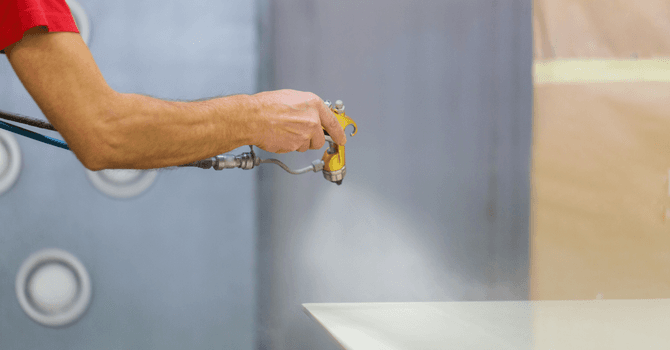
Source: Canva
We’ll highlight 3 paints:
Sico acrylic latex paint;
MP platinum acrylic urethane-fortified paint;
Rust-Oleum urethane mastic.
1- Sico anti-slip acrylic latex paint
Now this is the anti-slip polyurethane paint we mentioned earlier in the paint’s characteristics section. It’s perfect for decks, patios, and floors, and the Sico brand of polyurethane paint can be applied to both wood floors and concrete surfaces.
This 30 oz (887 ml) can of paint can coat a surface area between 120 and 140 sq. ft., twice over.
However, it can’t be applied year-round. It’s best applied in temperatures between 10°C (50°F) and 32°C (90°F).
One final word of advice: Avoid treading on your floor for at least 24 hours.
2- MF 3500: Platinum urethane acrylic fortified paint
MF urethane paint is made with 100% polyurethane acrylic resin that meets all the quality standards we’ve mentioned earlier regarding this type of paint.
However, while it’s perfect to coat wood, concrete, fibreglass, plywood, and stained floors, it can’t be applied to metal.
Also, pay close attention to the type of wood onto which you're applying the paint. Remember when we mentioned that urethane paints are self-sealing? Well, they're not when it comes to new wood surfaces that are likely to bleed, such as exotic wood, red cedar, or wood veneers and glued laminated wood.
Just like all urethane paints, don’t apply it in temperatures below 10°C (50°F) or above 32°C (90°F).
What about its weak selling points? Probably the fact that 3 finishing coats are needed to ensure durability. With 4 hours of drying time between finishing coats, that adds up to 12 hours total of drying time for light colours alone.
Why light colours? Because with dark colours, you need to plan for 8 hours of drying time between each coat.
After a 24-hour drying time has elapsed, you still might not be done yet. This paint isn’t typically anti-slip. This is why MF Paints strongly recommends that you apply an anti-slip coating, i.e. 2 additional coats.
3- Rust-Oleum urethane mastic
Rust-Oleum markets a paint finish with a 2-year rust-proof guarantee. This guarantee isn’t contingent upon specific conditions, including the application of multiple coats, taking into account well-defined factors such as:
Use at 25°C (77°F) and 50% relative humidity;
Drying time at temperatures from 21-27°C (70-80°F);
Relative humidity at 50% when drying.
Not at all, because DTM 9800 System urethane paint works with just 1 coat. So one 106 oz (3.14 litres) can coats a surface area of 280 sq. ft.
All the better, since its weak selling point is the same as that of MF 3500, except worse. The drying time between coats is 16 to 24 hours. This can be cut down to 4 or 5 hours by applying an accelerator.
Why even consider multiple coats when a single one suffices? As highlighted by the manufacturer, professional painters apply 2 coats to surfaces stripped by means of abrasive blasting.
This technique requires a tank sprayer. At this point, remember what we mentioned in our definition of urethane paint, notably the part about isocyanates and asthma: spraying without protection is harmful to your lungs, so leave it to the professionals.
Back to its advantages, because there's more to it than that. This brand of urethane paint is available in 10 different colours:
Aluminum;
Blue;
Silver;
Navy gray;
Yellow;
Black;
Red;
Regal red;
White;
Beige.
The only thing you need to know is that applying a grey or red primer will result in a better outcome.
Unlike the previous paints described above, there's yet another major difference: Application temperatures are much higher.
You can paint surfaces at temperatures between 5°C and 38°C (40°F and 100°F). In Quebec, to apply urethane paint worry-free, we recommend a good temperature variation.
The only thing you need to know is that applying a grey or red primer will result in a better outcome.
Unlike the previous paints described above, there's yet another major difference: Application temperatures are much higher.
Urethane paint price point
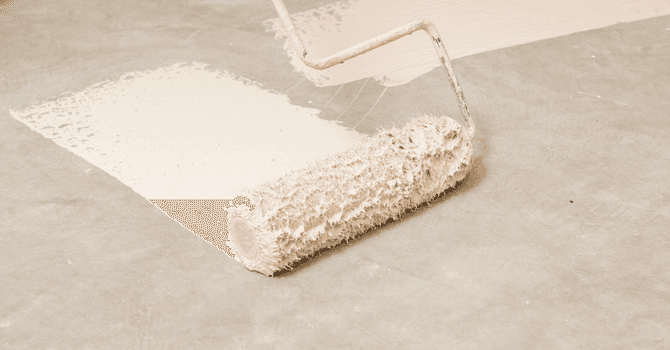
Source: Canva
The cost of urethane paint varies according to brand and model, rather than retailer. Check the model number or product code.
At Patrick Morin's renovation centre, 100% acrylic and polyurethane latex paint by Sico retails between 30$ and 50$ for a 1-gallon (3.78-litre) can covering 140 sq. ft.
The same retailer also sells a similar paint can, but with a different product code, this time priced at 60$ and higher. So be careful.
At Rona, the same can retails between 15$ and 30$.
At Tenaquip, Rust-Oleum acrylic urethane floor paint costs between 80$ and 100$ for 1 gallon (3.78 litres) and covers 270 sq. ft. (25 m²).
Bottom line: Know what you’re buying and compare the different characteristics of each can of urethane paint.
Get 3 renovation quotes for your paint project
RenoQuotes.com can help you get quotes for your paint project. By submitting your project, we’ll put you in contact with top-rated contractors. Fill in the form on the homepage (it only takes a few minutes) and get estimates from trusted professionals.
Dial 1-844 828-1588 to speak with one of our customer service representatives.
Looking for something else?
Related articles
The latest industry news, interviews, technologies, and resources.

Léa Plourde-Archer
•07 Nov 2023
Installing a hardwood floor can have a huge impact on your house: it can transform a room and increase the value of the building. Timeless and durable, hardwood floors are also popular because they are known for their warmth and beauty.
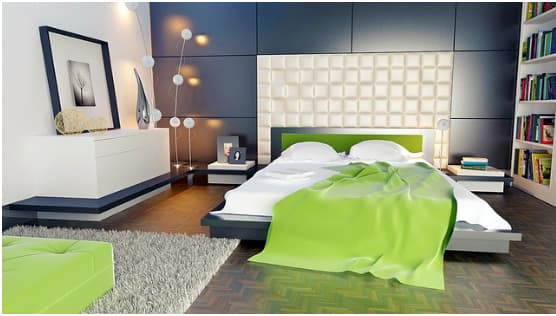
Editorial Team
•07 Nov 2023
Wall panels are a wonderful feature for the home, and they come in a variety of materials, shapes, styles and colours. Therefore, they can be used alongside almost any home decor, made to suit the needs of any homeowner. Panelling can cover an entire wall, or just half if you so choose. Installing wall panelling is a DIY project that can be easily accomplished with the right steps and the options are endless!

Karine Dutemple
•07 Nov 2023
For every storage space at home, there is inevitable long-term chaos. Fortunately for us, there are now many ways to organize these spaces, whether it's the wardrobe, kitchen cabinets or rooms like the laundry room. Apart from Ikea's convenient facilities, there are other ingenious and original tips that will help you optimize the organization of your closets.

Editorial Team
•05 Dec 2023
We’re still a few weeks (months) away from summer, but it’s never too early to start thinking about that warm weather and its effect on your home. During those particularly scorching months, air conditioning is a modern-day lifesaver. Even on the hottest of summer afternoons, it’ll cool you down and bring your energy levels back up.
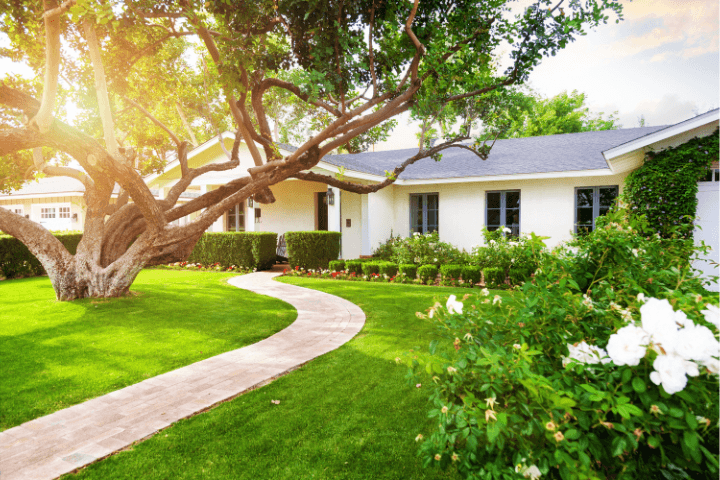
Editorial Team
•25 Jul 2025
Are you looking to benefit from a new, revamped landscape design, but are worried about getting it done right? If so, maybe hiring a professional landscaper is just the right call.